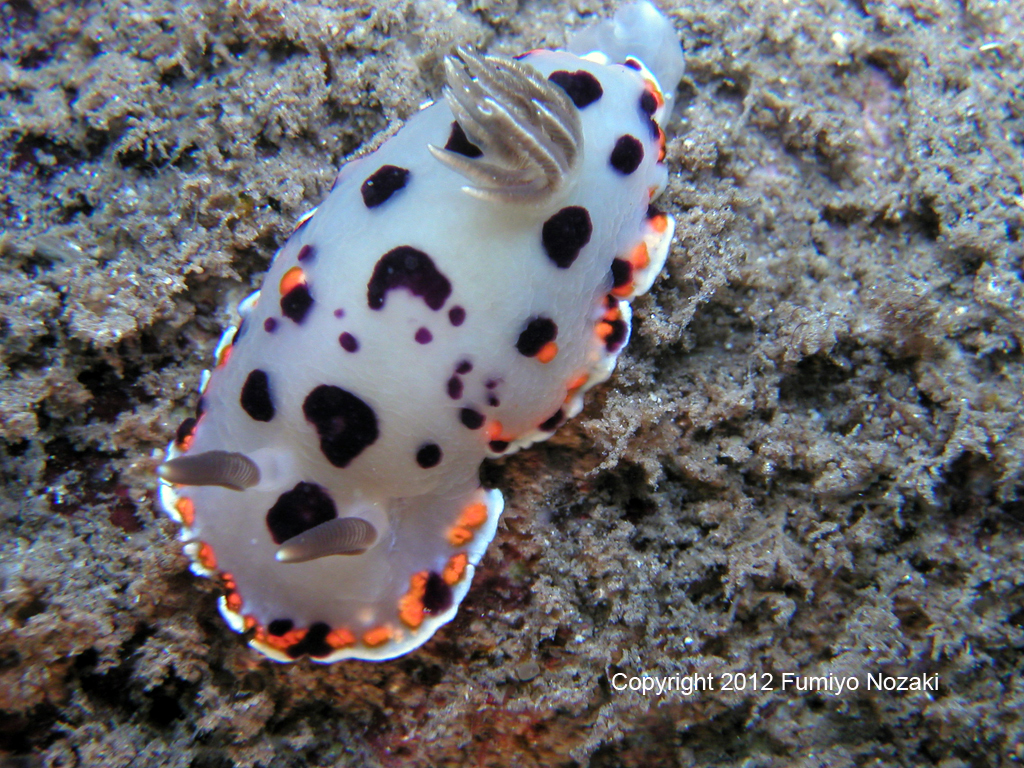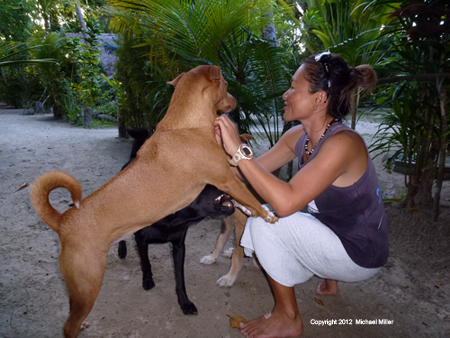 |
Goniobranchus tumulifera
Images courtesy of Fumiyo NozakiMadang, PNG
Goniobranchus tumulifera (Collingwood, 1881)
This specimen is a striking example of what we use to call Chromodoris tumulifera. The acid secreting mantle glands are easily seen along the edge of the mantle.
Chromodoris tumulifera has been reassigned to the genus Goniobranchus Pease, 1866. This new adventure was published by Rebecca Johnson and Terry Gosliner in the on-line journal - PLoS ONE The type species of the genus is Goniobranchus vibrata Pease, 1866.
Rebrecca and Terry state - "This clade includes all of the Indo-Pacific species of Chromodoris that are not part of the black-lined, planar egg mass clade, except Chromodoris alternata and Chromodoris ambiguus.
This phylogeny is the first to find definitive support for a clade of chromodorids, known to lay egg masses with extra-capsular yolk. When Pease designated Doris vibrata as the type species for the new genus Goniobranchus, he should have changed the ending of vibrata to vibratus to reflect the masculine gender of the -us ending. We have made that correction here and changed the gender of all of the species names that require changing (names derived from adjectives) in Goniobranchus."
Of the more than 300 species in Chromodorididae just under half find themselves in a new genus. To gain full benefit from the huge scientific contribution open and print all of the tables, figures and attachments.
Among the species finding themselves in Goniobranchchus, are some of my favorites: Goniobranchus cazae, Goniobranchus roboi, and Goniobranchus hintuanensis courtesy of Bill Rudman's Sea Slug Forum. Other genera proposed for the chromodorids include: Dorisprismatica, Felimida, and Felimare.
Some of you may ask - Is an on-line publication a valid published document? PLoS ONE offers the following -
"The electronic version of this document does not represent a published work according to the International Code of Zoological Nomenclature (ICZN), and hence the nomenclatural acts contained in the electronic version are not available under that Code from the electronic edition. Therefore, a separate edition of this document was produced by a method that assures numerous identical and durable copies, and those copies were simultaneously obtainable (from the publication date noted on the first page of this article) for the purpose of providing a public and permanent scientific record, in accordance with Article 8.1 of the Code. The separate print-only edition is available on request from PLoS by sending a request to PLoS ONE, Public Library of Science, 1160 Battery Street, Suite 100, San Francisco, CA 94111, USA along with a check for $10 (to cover printing and postage) payable to "Public Library of Science."
I guess its time to cross out the names in our field guides and replace them with these
Sammamish, WA
Apr., 2012
Nozaki and friend
 |
Last month while attending a Nudibranch Workshop at Lissenung Island Resort in PNG, I had the very rewarding experience of diving with Nozaki who just never seemed to run out of energy in making each dive the best that could be made of it! Her enthusiasm it seemed was boundless, when she wasn't in the water, she was helping in the kitchen or helping serve guests. Senior divers even got a neck massage while waiting for dinner one night! My best dive with her was at her Mandarin Fish dive site where while waiting for the magic mating moment of the Mandarin, she uncovered some sand covered cocoons from the bottom. After gentle prodding, guess what crawled out? Plakobranchus sp. 1 from the Indo Pacific Book! Nozaki and this guy will definitely be the subject of a future BOW! Michael Miller |

|
